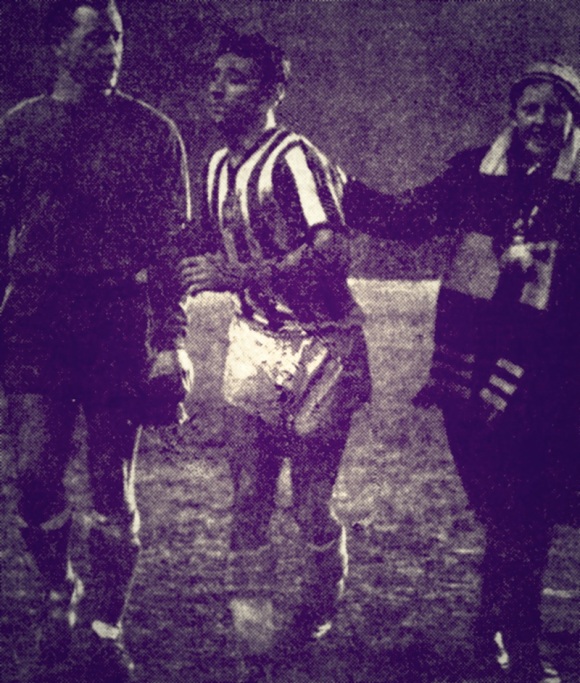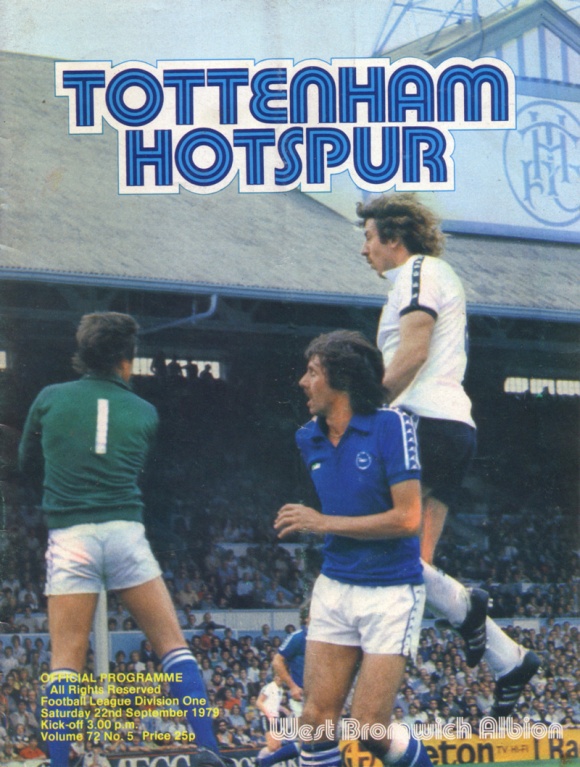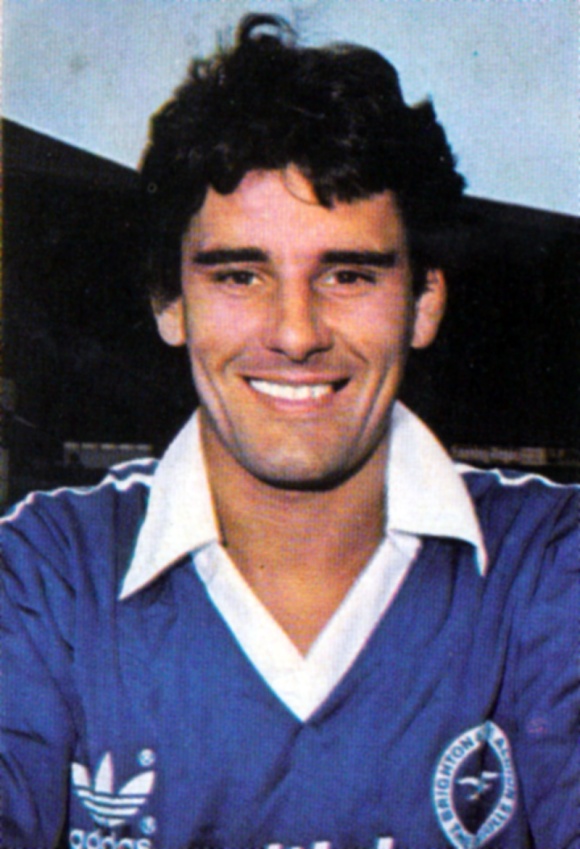Here’s Ted MacDougall of AFC Bournemouth, a scorer of nine goals against Margate in the FA Cup during the season, closely watched by Albion’s Ian Goodwin on 1st April 1972:
The 1971/72 season had begun well for the side previously known as Bournemouth and Boscombe FC. Newly promoted from the Fourth Division, it was a case of ‘Cherries on top’ as John Bond’s men headed Division Three after eleven matches, with 17 points. Notts County and Aston Villa both had 15 while Brighton were well down the table with 12 points.
Pat Saward’s Brighton closed the gap when they defeated Bournemouth 2-0 at the Goldstone Ground on 27th December 1971 aided by goals from Kit Napier and Peter O’Sullivan before a bumper 30,600 crowd. Thanks to this score, Notts County, Fourth Division champions the previous season, looked like they might make it two league titles in two when they took over the leadership in the New Year. In a triumph for the new boys, could they and Bournemouth both gain successive promotions come May? The answer was no. County suffered an injury jinx that put David Needham, Willie Carlin and star striker Tony Hateley out of action, and their results suffered. From the middle of February they drew six and lost two matches in an eight-match winless streak. It cost County dearly.
As for Bournemouth, Ted MacDougall, buddied up front with Phil Boyer, was attracting a great deal of interest, and not just for this advert, found on the back of the Bournemouth v Brighton programme!
As Tommy Lawton said:
“This fellow keeps scoring goals and if you can hit goals consistently whether it is in the First or Fourth Division you have to be good.”
However, even with such a phenomenal strike force, the Cherries suffered a downturn. In the Official Football League Book 1972-73, it says:
Bournemouth started to quake when the final crunch came. Whatever the reason, Bond’s side could not recapture the consistency and winning form of those heady early days. One of the key games was when Brighton went to Dean Court on Easter Sunday. A Bournemouth win could have changed many things, but Brighton drew 1-1.
The draw was part of Bournemouth’s poor spell when they drew four and lost two out of six matches from the middle of March, just as the season was hotting up. The Official Football League Book continues:
And what of Brighton, the team from the South Coast holiday playground that had laboured too long in the soccer backwaters? Pat Saward agrees that their biggest asset all season was that no one was tipping them for promotion until the final stages: “So we had none of the pressures Bournemouth, Villa and Notts had. We crept up unnoticed and this was our trump card.” But Saward freely admitted: “We had an awful lapse when we lost two games on the trot to Oldham and Bradford City. It came at a bad time and it was make or break from then. Our next game was against Villa and I made drastic changes.” The television watching millions saw the result… a fine stylish win for Brighton in what must have been one of the games of the season in any Division.
Saward played another trump card hours before the transfer deadline. ‘The fans were crying out for new faces but everyone must have thought I had decided to try for promotion with the 14 players I already had.” Agatha Christie could not have come up with a better final and Saward swooped and signed Irish international Bertie Lutton from Wolverhampton Wanderers and a player who must have been an unknown quantity to the Goldstone Road fans… Tranmere Rovers’ Ken Beamish.
Beamish is a forward very much in the modern mould. Not big, but stocky and packed full of explosive sprinting power, a terrific shot and great appetite for the game. “They were both last ditch signings and Ken made an astonishing difference,” says Saward. “I spent only £41,000 in getting my promotion side together so we were very much Villa’s poor relations in that sense.
“Notts County were the team that surprised me. I just don’t know why they fell away so badly in the end for they had all-important matches in hand. Bournemonth were the most skilful side we faced.”
Saward puts down his team’s success to: “Dogged determination to succeed from all the players. We stamped out inconsistency. I got rid of ten of the players I inherited and got together a team built on character. That’s the key quality, apart from skill of course, as far as I’m concerned.”
With just two clubs going up, here is the final table for one of the greatest promotion races in Division Three, one that pulled huge crowds:






































